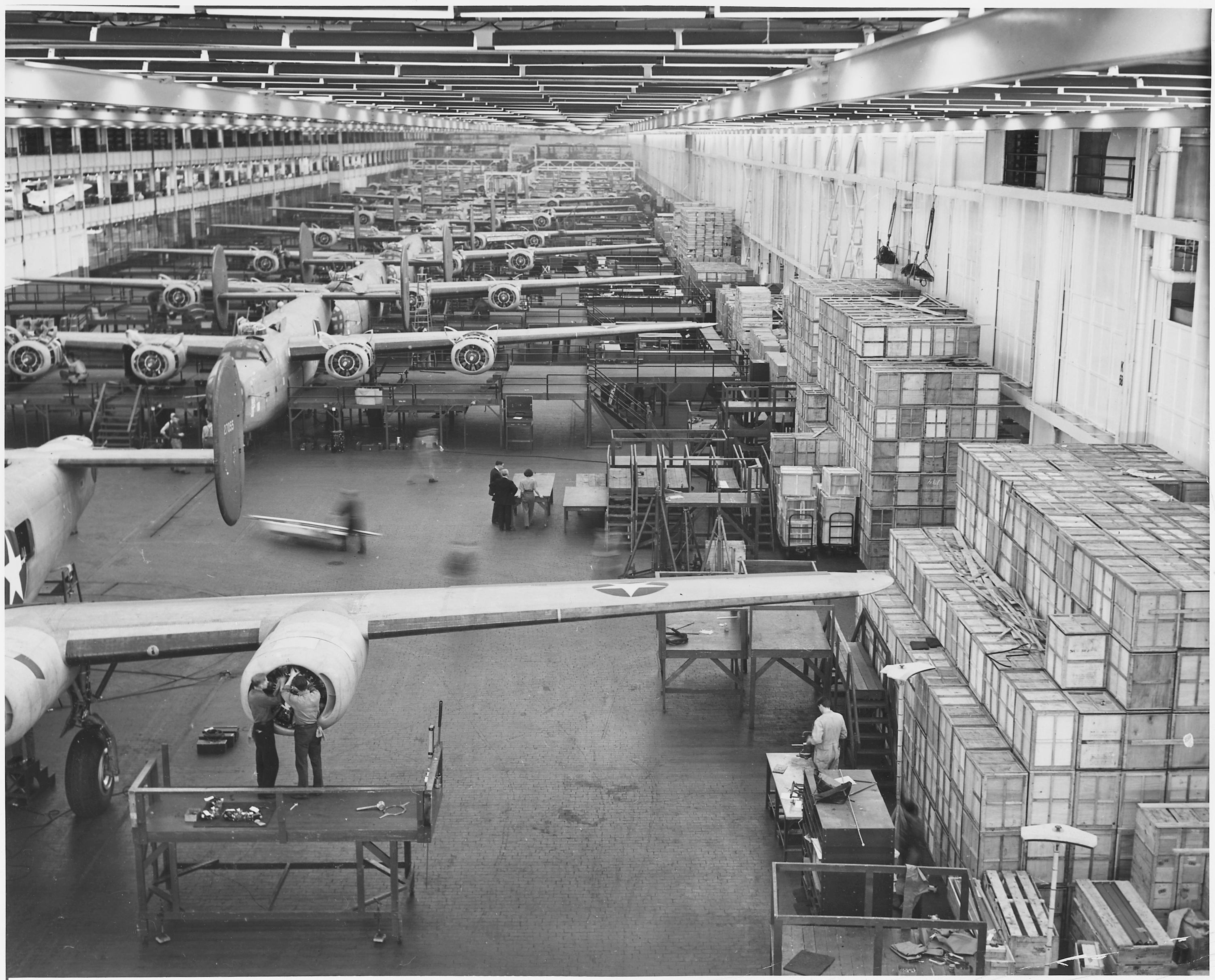September 4, 1940
Students at Yale University found the America First Committee to oppose American entry into World War II.
September 16, 1940
President Franklin Delano Roosevelt signs the Selective Training and Service Act into law, establishing the first peacetime military draft in US history.
September 23, 1940
The American Bantam Car Company delivers to the US Army a prototype of what would become the jeep. Three companies—Bantam, Willys-Overland, and Ford—would ultimately receive government contracts to produce the vehicle.
December 29, 1940
President Franklin D. Roosevelt calls on the United States to become “the great arsenal of democracy” in one of his fireside chats to the nation.
January 16, 1941
The War Department announces the establishment of the 99th Pursuit Squadron, the first African American Air Force unit. The airmen of this unit would become the first Tuskegee Airmen.
June 25, 1941
President Franklin D. Roosevelt issues Executive Order 8802 prohibiting racial discrimination in defense industries.
December 7, 1941
Japanese planes attack Pearl Harbor, Hawaii; Germany and Italy declare war on the United States four days later.
December 19, 1941
America’s largest rubber producers—Jersey Standard, Firestone, Goodrich, Goodyear, and United States Rubber Company—sign a patent-and-information-sharing agreement in order to speed up production of much-needed synthetic rubber for aircraft, military vehicles, and equipment.
January 31, 1942
The Pittsburgh Courier publishes a letter to the editor from James G. Thompson proposing the concept of a “double-V victory”—victory over America’s enemies abroad and victory over the enemies of racial equality at home.
February 19, 1942
President Franklin D. Roosevelt issues Executive Order 9066, which results in the incarceration of Japanese Americans, German Americans, and Italian Americans without due process.
May 4, 1942
US citizens first receive War Ration Book One, which entitles the holder to one half pound of sugar weekly. The federal government would go on to issue another three ration books and a variety of stamps designed to control crucial supplies and discourage hoarding.
June 12, 1942
Four German soldiers come ashore at Amagansett on Long Island, New York, under a cover of darkness, intending to blow up bridges, power plants, and other targets. Four more German agents come ashore in Florida four days later. All are arrested within a month.
September 10, 1942
The Ford Motor Company produces its first complete B-24E Liberator at its Willow Run, Michigan, factory. This facility had the distinction of being the world’s largest enclosed single room, with an assembly line stretching over a mile in length and covering 3.5 million square feet. By 1944, Ford was producing 300 B-24E Liberators every month.
September 21, 1942
The first prototype of Boeing’s B-29 Superfortress makes its maiden voyage from Boeing Field near Seattle, Washington. The B-29 became the single most expensive weapons development project of World War II, costing even more than the Manhattan Project.
May 29, 1943
The character of “Rosie the Riveter” is first depicted on the cover of The Saturday Evening Post in an image created by Norman Rockwell. The term “Rosie the Riveter” originated from a song by the same name written that year by Redd Evans and John Jacob Loeb. The popular “We Can Do It!” propaganda poster was created before the Rockwell image, but the female character depicted on it was not known as Rosie the Riveter until after the war.
June 20, 1943
A violent race riot breaks out in downtown Detroit, resulting in the death of 34 people, mostly African Americans. Tensions had been building up for months as tens of thousands of workers—black and white—had moved to the area for defense jobs.
October 2, 1943
The Third War Loan, a nationwide bond drive, ends with nearly $19 billion raised for defense. This was one of eight major WWII-era drives in which American citizens purchased bonds to help fund the nation’s war effort.
August 1944
Two hundred fifty-eight African American sailors refuse to load ammunition onto ships at the Port Chicago Naval Ammunition Depot, three weeks after unsafe working conditions contributed to an intense explosion that killed 320 people, 202 of them African American, on July 17, 1944. The actions of the sailors became known as the Port Chicago Mutiny.
May 8, 1945
The United States celebrates Victory in Europe Day.
July 16, 1945
Scientists explode the first-ever nuclear device, nicknamed “Gadget” at Alamogordo, New Mexico, in the Trinity Test.
September 2, 1945
Representatives of the Japanese government formally surrender aboard the USS Missouri; the United States celebrates Victory over Japan Day.
June 12, 1947
Secretary of Agriculture Clinton P. Anderson orders the end of sugar rationing by coupon in the United States. This was the last remaining commodity subject to wartime controls based on ration coupons.
